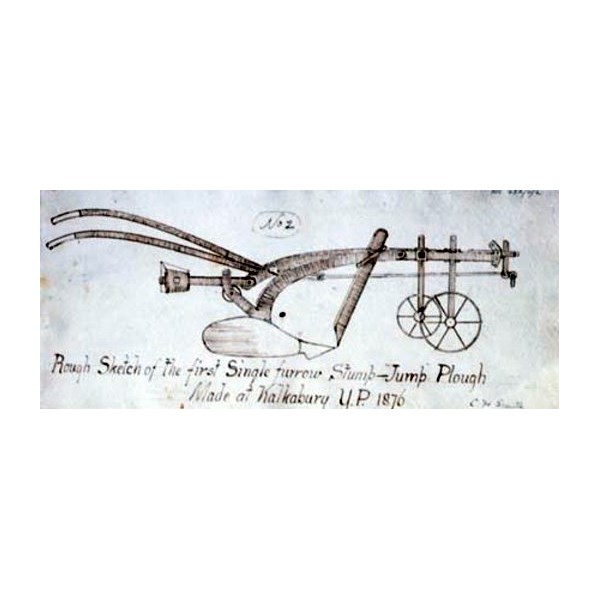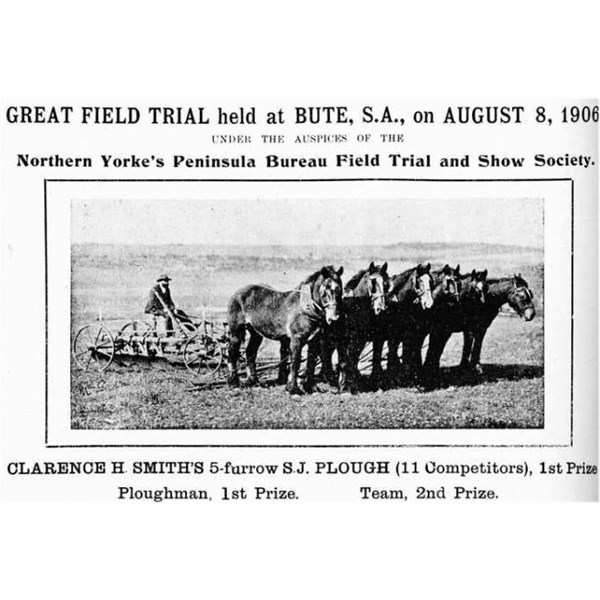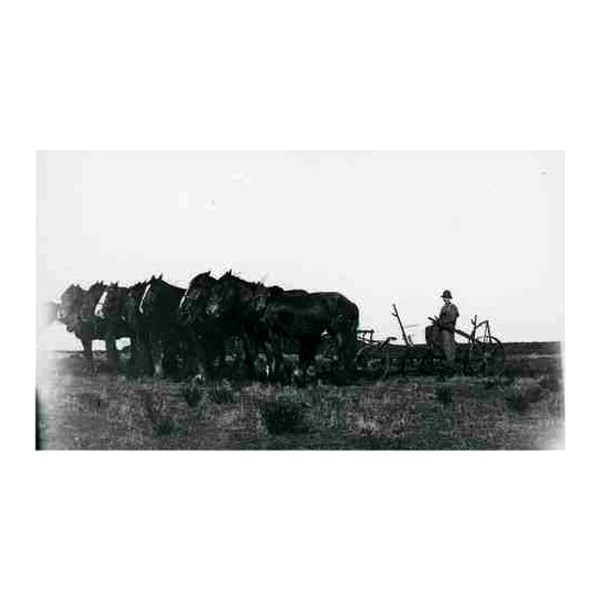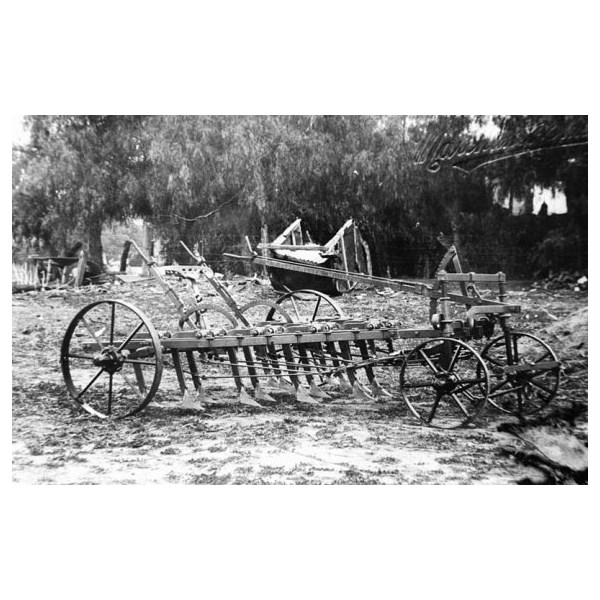The stump-jump plough is a kind of plough invented in South Australia in the late 19th century by Richard Bowyer Smith to solve the particular problem of preparing mallee lands for cultivation
Mallee scrub originally covered large parts of southern Australia, and when farmers moved into these areas they found it peculiarly difficult to clear the land. After the trees were cut down, the roots energetically produced regrowth. These
young shoots and the old roots could be killed by repeated burning (see below), but the large roots remained in the ground, making it impossible to plough the soil. Grubbing the roots out was a slow and labour-intensive activity, and the problem was seriously hindering agricultural expansion.

Plan of the original single-furrow plough

Stump Jump Plough advertisement
In South Australia, land was being offered under the Scrub Act of 1866 to farmers on lease, with the option of purchasing after 21 years at the price of 1 Pound per acre. However, grubbing the scrublands was proving costly, at approximately 2 Pounds per acre, and solutions to the problem were desperately sought.
The situation had grown so frustrating by 1878 that the South Australian government offered a reward of 200 Pounds to anyone who could develop an effective mechanical stump puller; although myriad devices were developed, none proved to be a breakthrough success. Many of these machines were trialled in contests near
Gawler in the same year, but none were as effective as three skilled axemen.
Pending the development of an effective machine, a technique known as mullenizing (after a farmer from Wasleys named Charles Mullens) became popular as a means of
clearing the scrub. Mullenizing involved dragging a heavy roller over roughly cleared ground to crush
young shoots; the field was then burnt, and a spiked log was run over the ground, and a crop of wheat sown. The next season, the stubble and any mallee regrowth was again burnt, and eventually the mallee died, though stumps remained underground.

Stump Jump Plough at Bute Field Day 1906

Stump Jump Plough, near Pinaroo 1910
In 1876 a special plough was invented by agricultural machinery apprentice Richard Bowyer Smith, and later developed and perfected by his brother, Clarence Herbert Smith, on the
Yorke Peninsula (where the problem was particularly acute). The plough consisted of any number of hinged shares: when the blade encountered an underground obstacle like a mallee stump, it would rise out of the ground. Attached weights forced the blade back into the ground after the root was passed, allowing as much of the ground to be furrowed as possible. Although a little unorthodox, the plough in action appearing "like a ship in a storm",it proved remarkably effective, and was dubbed the "stump-jump" plough.

Stump jump plough
The invention was hailed as a "complete revolution" and, in combination with the process of mullenizing, was adopted almost universally across the mallee lands, even proving as useful in stony ground as it was in mallee country.
.